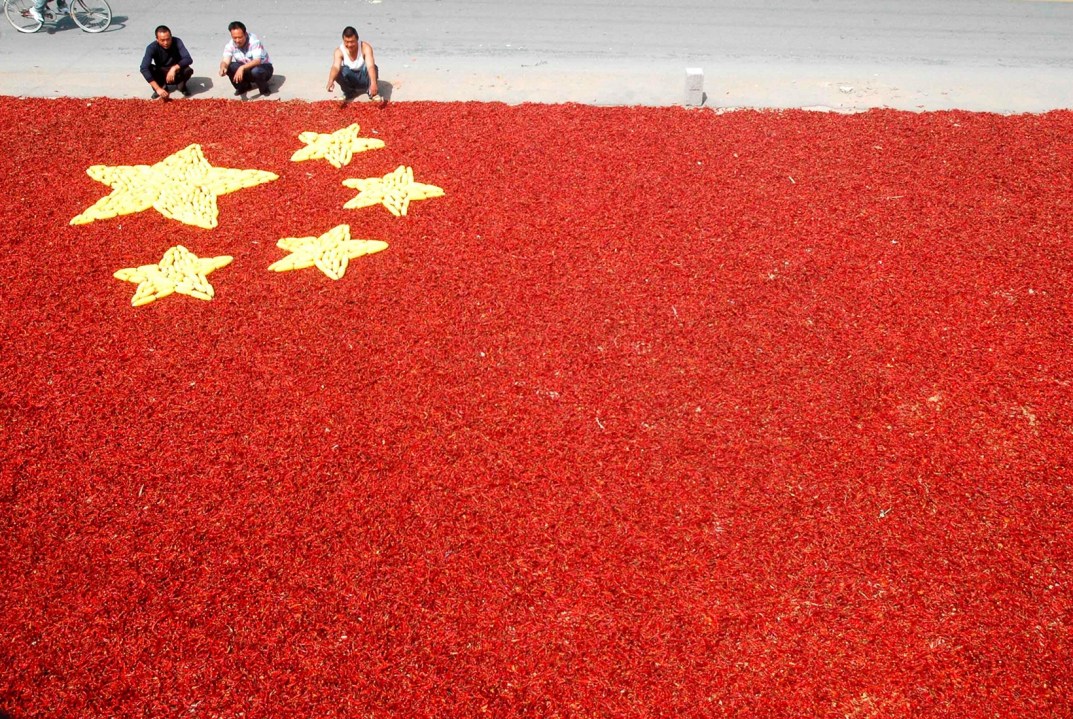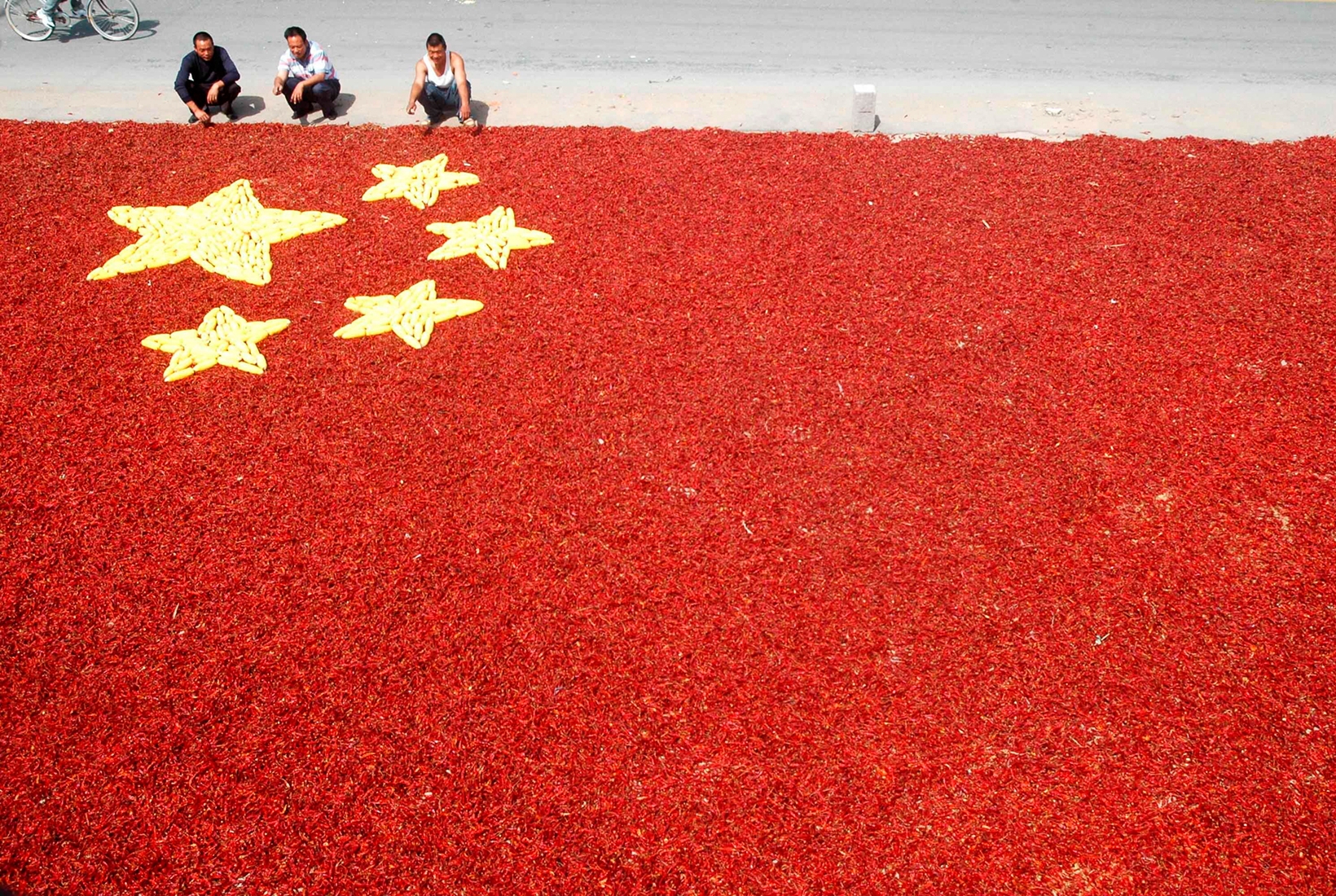These days it is as hard to imagine Sichuanese food without chillies as it is to imagine Italian food without tomatoes. Both ingredients were among the New World crops that transformed culinary cultures across the globe after Christopher Columbus’s ‘discovery’ of the Americas in 1492. The chilli first appeared in China sometime in the late 16th century. Within 50 years it was rapidly gaining popularity and by the late 19th century it was ubiquitous in many parts of the country. Brian R. Dott has scoured Chinese and other sources to find out how and why this foreign spice conquered Chinese palates. He examines the chilli’s progress in China from multiple perspectives: culinary, medical, literary, aesthetic, economic and cultural.
Particularly fascinating is what he reveals of the informal and piecemeal way in which the chilli entered the country. Some New World crops, such as maize and sweet potatoes, were calorific foods that could not only feed a population in times of famine but enabled the cultivation of marginal lands unsuitable for rice and wheat, so they attracted the attention of governing elites; others, such as tobacco, became valuable cash crops. By contrast, the chilli, which grew so readily and prolifically in kitchen gardens that it was ‘essentially free’, was useful neither for filling people’s bellies nor traders’ coffers: it was simply tasty.
Dott’s research suggests that no one deliberately imported chillies to China. They were probably introduced by the multi-ethnic crews transporting goods from south-east Asia to the eastern Chinese coast, who used the spice to season their meals on board. Once arrived, chillies sped through China via unofficial networks, farmer to farmer, as they were seized on by the lower social classes as a welcome accompaniment to their typically bland and starchy diets. They were adopted with particular zeal by people in Sichuan, Hunan and other south-western provinces, but also became an essential condiment in southern Shaanxi and across the north- west of China. By 1755 one local gazetteer in northern Shaanxi province was already stating that chillies were ‘as indispensable in daily cuisine as onion and garlic’.
The idea that heavily seasoned food is somewhat vulgar is still prevalent in China
This ad hoc, below-the-radar transmission makes it difficult to pinpoint exactly where and when chillies were first grown and eaten in different parts of China. Dott concludes that they may have arrived at multiple times and places, perhaps first on the east coast in the 1570s, but with other routes including into north-eastern China via the Korean peninsula. This diversity of entry points may explain why the spice was known by so many different local names, including ‘foreign pepper’ on the east coast (fanjiao) and ‘foreign ginger’ (fanjiang) in Taiwan. Many of the names included the character jiao, the original name for Sichuan pepper, a native spice that the chilli was soon to eclipse. Only in the late 19th century did a broad national consensus develop around the name ‘spicy pepper’ (lajiao), which is widely used today.
The first Chinese written mention of the chilli was in a book by Gao Lian, a collector and connoisseur who lived in Hangzhou, in 1591, who remarked not just on its spicy flavour but its aesthetic appeal. Otherwise textual evidence for the spread of the chilli in China is patchy. Dott shows how the elite compilers of regional gazetteers and cookbooks were slow to acknowledge the popularity of the chilli at the local level, partly because of a kind of cultural snobbery. Many were biased in favour of the subtle flavours of the cooking of the eastern Jiangnan region, and perhaps influenced by religious ideas about the impurity of pungent foods.
The chilli only started spicing up written sources more broadly in the late 18th century, first appearing in a recipe book around 1790 and then cropping up more frequently as its use became so prevalent that it was hard to ignore. (The idea that heavily seasoned food is somewhat vulgar is still prevalent in China, where spicy Sichuanese may be the most popular regional cuisine, but is seen as lowbrow compared with Cantonese and Jiangnan cooking.)
Dott shows in detail how the chilli was incorporated into existing local traditions. In many places it was favoured by poorer people because it was cheaper than other seasonings. Salt was taxed and subject to a government monopoly; black pepper was imported and therefore more expensive; even Sichuan pepper was typically purchased rather than home grown.
In particular, Dott argues that the integration of the chilli into traditional medical theory and practice was key to its wholesale localisation in China. Although materia medica were slow to list the chilli among their remedies, when it did appear it was generally grouped with other ‘pungent’ ingredients, such as ginger, cassia and Sichuan pepper, with similar tonic functions. In coastal regions where shellfish was widely eaten, the chilli was recommended as a treatment for food poisoning — a nod to the antimicrobial properties of capsaicin. In the humid inland provinces of Hunan and Sichuan, the chilli was seen as a remedy for illnesses induced by damp (as it still is today).
Given elite snootiness about the chilli, it’s perhaps fitting that it became a symbol of communist zeal. Chairman Mao famously said that anyone who didn’t eat chillies couldn’t be revolutionary. In his home province, Hunan, the chilli has become part of a local identity constructed around spicy food, outstanding military men and general feistiness. Dott explores in detail the cultural appeal of the chilli in China, which is partly rooted in the idea that red is the colour of celebrations and looks like festive firecrackers. It has also become associated with female sassiness and sexiness, from the peppery character Wang Xifeng in the classic 18th-century novel Dream of the Red Chamber to a modern pop song, ‘Spicy Girls’, by the Hunanese singer Song Zuying (the chilli-laced video of this song, available on YouTube, is fun to watch).
The Chile Pepper in China is a valuable resource for anyone interested in Chinese culinary culture or the global history of the chilli as symbol — ‘vitamin, vegetable, preservative and spice’. Dott’s research is extensive, while his writing is entertaining, digestible and peppered with much fascinating information.







Comments